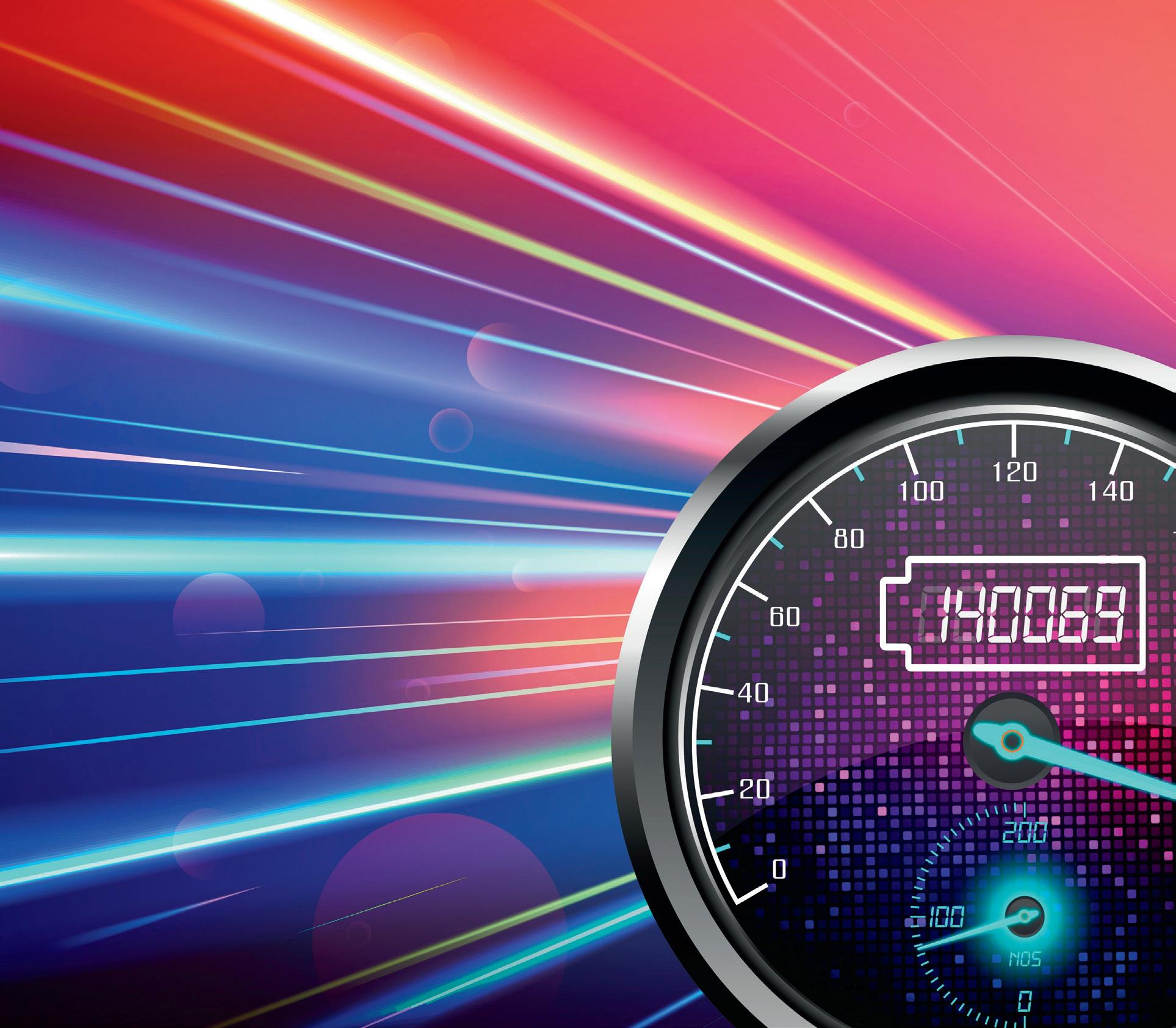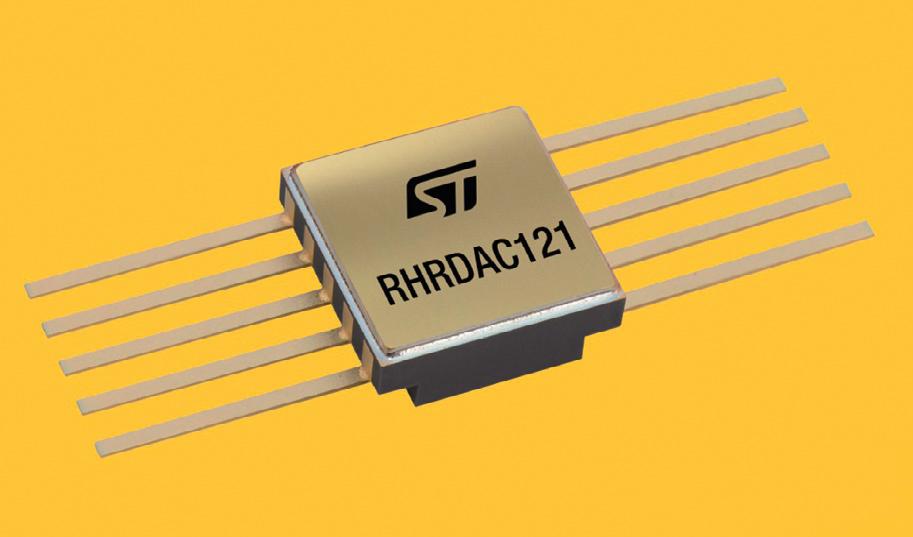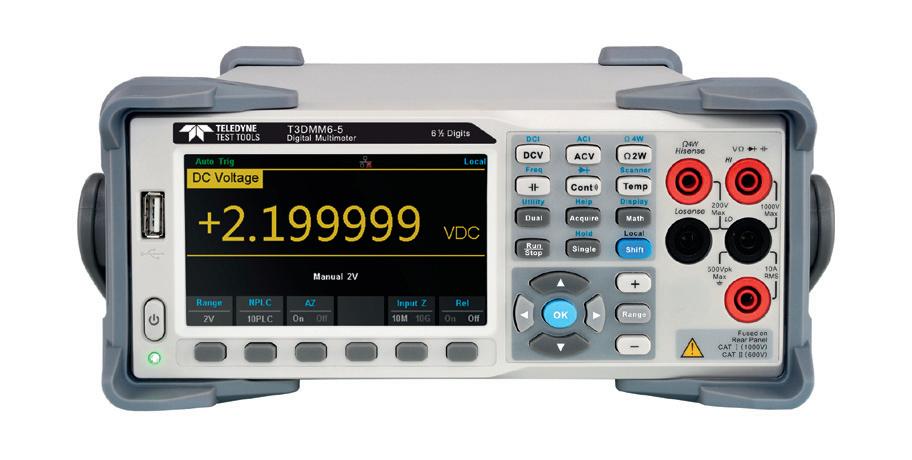
6 minute read
Found: the speed limit of optoelectronics
© Stock.Adobe.com/au/artnovielysa
Semiconductor electronics is getting faster and faster — but at some point, physics no longer permits any increase. So exactly how fast can electronics be?
When computer chips work with ever shorter signals and time intervals, at some point they come up against physical limits. The quantum-mechanical processes that enable the generation of electric current in a semiconductor material take a certain amount of time. This puts a limit to the speed of signal generation and signal transmission. European researchers have now confirmed that this speed cannot be increased beyond one petahertz (one million gigahertz), even if the material is excited in an optimal way with laser pulses.
Electric current and light (ie, electromagnetic fields) are always interlinked. This is also the case in microelectronics: in microchips, electricity is controlled with the help of electromagnetic fields. For example, an electric field can be applied to a transistor and, depending on whether the field is switched on or off, the transistor either allows electrical current to flow or blocks it. In this way, an electromagnetic field is converted into an electrical signal.
In order to test the limits of this conversion of electromagnetic fields to current, laser pulses — the fastest, most precise electromagnetic fields available — are used, rather than transistors.
“Materials are studied that initially do not conduct electricity at all,” said Professor Joachim Burgdörfer, from Vienna University of Technology (TU Wien). “These are hit by an ultrashort laser pulse with a wavelength in the extreme UV range. This laser pulse shifts the electrons into a higher energy level, so that they can suddenly move freely. That way, the laser pulse turns the material into an electrical conductor for a short period of time.”
As soon as there are freely moving charge carriers in the material, they can be moved in a certain direction by a second, slightly longer laser pulse. This creates an electric current that can then be detected with electrodes on both sides of the material. These processes happen extremely fast, on a time scale of atto- or femtoseconds.
IN ORDER TO INCREASE THE SPEED, EXTREMELY SHORT UV LASER PULSES ARE NEEDED, SO THAT FREE CHARGE CARRIERS ARE CREATED VERY QUICKLY.
“For a long time, such processes were considered instantaneous,” said Professor Christoph Lemell, also from TU Wien. “Today, however, we have the necessary technology to study the time evolution of these ultrafast processes in detail.”
The crucial question is: how fast does the material react to the laser? How long does the signal generation take and how long does one have to wait until the material can be exposed to the next signal? Experiments to determine this were carried out at the Max Planck Institute of Quantum Optics and Graz University of Technology (TU Graz), while the theoretical work and complex computer simulations were done at TU Wien. The results were published in the journal Nature Communications.
The experiment leads to a classic uncertainty dilemma, as often occurs in quantum physics: in order to increase the speed, extremely short UV laser pulses are needed, so that free charge carriers are created very quickly. However, using extremely short pulses implies that the amount of energy which is transferred to the electrons is not precisely defined. The electrons can absorb very different energies.
“We can tell exactly at which point in time the free charge carriers are created, but not in which energy state they are,” Prof Lemell said. “Solids have different energy bands, and with short laser pulses many of them are inevitably populated by free charge carriers at the same time.”
Depending on how much energy they carry, the electrons react quite differently to the electric field. If their exact energy is unknown, it is no longer possible to control them precisely, and the current signal that is produced is distorted — especially at high laser intensities.
“It turns out that about 1 PHz is an upper limit for controlled optoelectronic processes,” Prof Burgdörfer said.
Of course this does not mean that it is possible to produce computer chips with a clock frequency of just below 1 PHz — realistic technical upper limits are most likely considerably lower. But even though the laws of nature determining the ultimate speed limits of optoelectronics cannot be outsmarted, they can now be analysed and understood with sophisticated new methods.


RADIATION-HARDENED DIGITAL-TO-ANALOG CONVERTER
The STMicroelectronics RHRDAC121 radiation-hardened digital-to-analog converter (DAC) operates down to 2.5 V for use in modern, low-power system designs that older 3.3 V parts cannot support. Consuming just 0.6 mW at its maximum speed and supply voltage, the 12-bit, 1 Msps successive-approximation register (SAR) DAC helps reduce size, weight and power (SWaP) in next-generation satellites. Typically used in circuits for telemetry, housekeeping and precision sensor-gain adjustment, its features include an SPI-compatible serial output, internal voltage reference and automatic power-on-reset to zero-volt output. These should enable high precision with minimal external components, saving circuit complexity and board area.
Maintaining stable performance parameters in harsh conditions up to 100 krad(Si) total ionising dose (TID), the product is single-event latch-up (SEL) free up to 125 MeV.cm2/mg. It is characterised for single-event transient (SET) and single-event upset (SEU) and ready for immediate deployment with no further upscreening required.
The device is QML-V qualified and comes in a hermetic ceramic package with gold or solder-dipped leads. It is also available as bare die. Designed and manufactured in Europe, it leverages ST’s 130 nm pure CMOS technology and processes used over 45 years serving the space industry. Its development has been funded by CNES (Centre National d’Etudes Spatiales), the French Space Agency. STMicroelectronics Pty Ltd www.st.com

3.3 kV SiC POWER DEVICES
System designers of traction power units (TPUs), auxiliary power units (APUs), solid-state transformers (SSTs), industrial motor drives and energy infrastructure solutions require high-voltage switching technology to increase efficiency, reduce system size and weight and enhance reliability. Microchip Technology has expanded its SiC portfolio with the release of the 3.3 kV SiC MOSFETs and SiC SBDs, enabling designers to take advantage of their ruggedness and performance. Designers should thus be equipped with the tools to develop smaller, lighter and more efficient solutions for electrified transportation, renewable energy, aerospace and industrial applications.
Many silicon-based designs have reached their limits in efficiency improvements, system cost reduction and application innovation. While high-voltage SiC provides an alternative to achieve these results, until now the availability of 3.3 kV SiC power devices was limited. Microchip’s 3.3 kV MOSFETs and SBDs join the company’s comprehensive portfolio of SiC solutions that include 700, 1200 and 1700 V die, discretes, modules and digital gate drivers. Microchip Technology Australia www.microchip.com

DESKTOP MULTIMETER
The Teledyne Test Tools T3DMM6-5-SC is a 6.5-digit digital multimeter featuring a double 4.3″ TFT LCD display with a resolution of 480 x 272 pixels. The screen can be configured to display a histogram, data trends, bar graph, statistics or the traditional numeric mode.
The multimeter has a wide measuring range of 200 mV–750 V for AC true-RMS voltage and 200 µA–10 A for AC true-RMS current. Its high measurement accuracy up to 0.0005% + 0.0001% of the range for DC voltage is said to enable precise measurements.
Equipped with a 16-channel multiplexer, the device allows for the measurement of resistance (also using the four-wire method), capacitance, frequency, oscillation and temperature. It is also equipped with USB and LAN connectors with the possibility of remote control using SCPI or LabView commands. The internal 1 GB memory allows users to store large amounts of data and configuration files. Transfer Multisort Elektronik www.tme.eu









